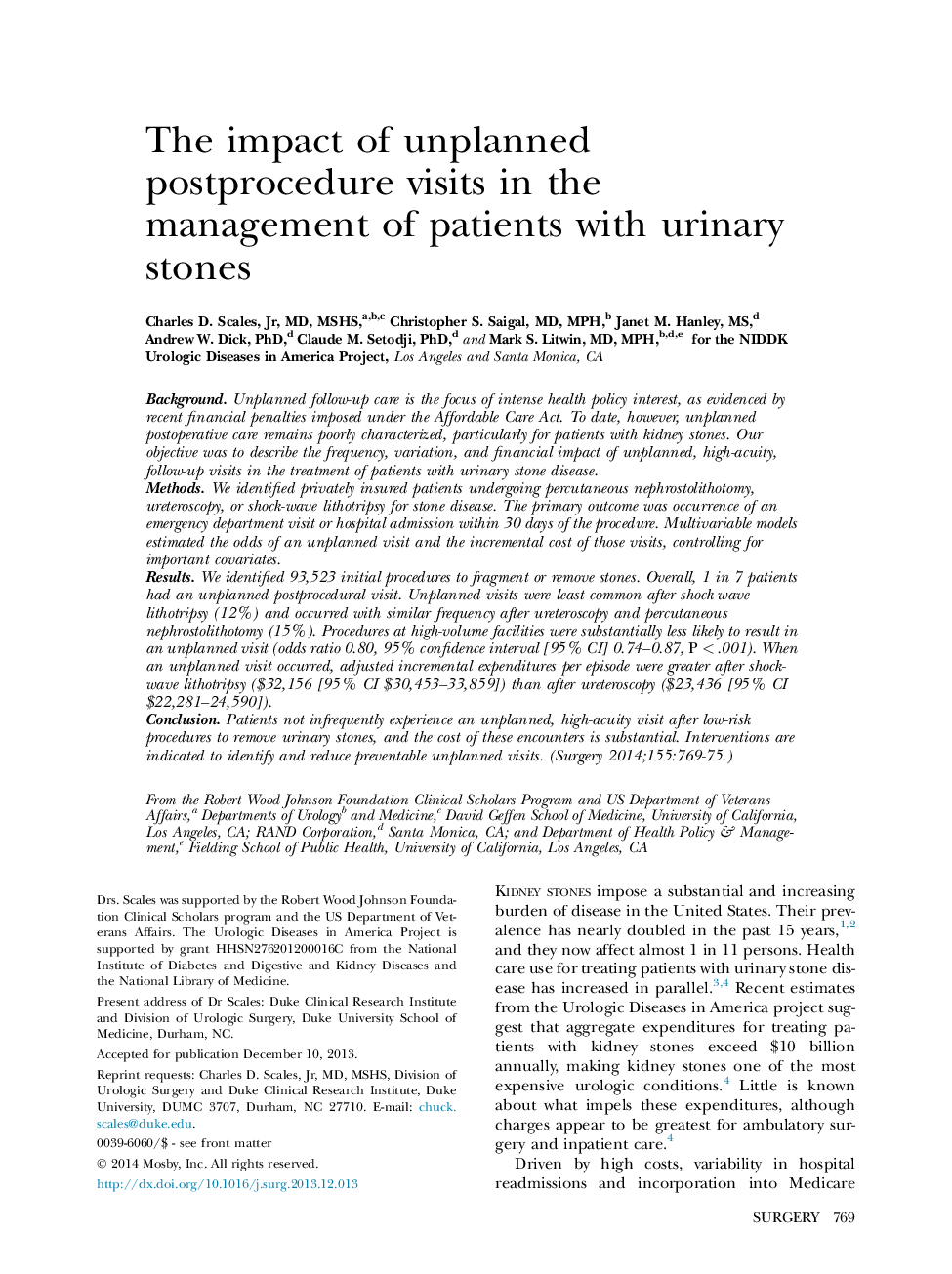| Article ID | Journal | Published Year | Pages | File Type |
|---|---|---|---|---|
| 4306529 | Surgery | 2014 | 7 Pages |
BackgroundUnplanned follow-up care is the focus of intense health policy interest, as evidenced by recent financial penalties imposed under the Affordable Care Act. To date, however, unplanned postoperative care remains poorly characterized, particularly for patients with kidney stones. Our objective was to describe the frequency, variation, and financial impact of unplanned, high-acuity, follow-up visits in the treatment of patients with urinary stone disease.MethodsWe identified privately insured patients undergoing percutaneous nephrostolithotomy, ureteroscopy, or shock-wave lithotripsy for stone disease. The primary outcome was occurrence of an emergency department visit or hospital admission within 30 days of the procedure. Multivariable models estimated the odds of an unplanned visit and the incremental cost of those visits, controlling for important covariates.ResultsWe identified 93,523 initial procedures to fragment or remove stones. Overall, 1 in 7 patients had an unplanned postprocedural visit. Unplanned visits were least common after shock-wave lithotripsy (12%) and occurred with similar frequency after ureteroscopy and percutaneous nephrostolithotomy (15%). Procedures at high-volume facilities were substantially less likely to result in an unplanned visit (odds ratio 0.80, 95% confidence interval [95% CI] 0.74–0.87, P < .001). When an unplanned visit occurred, adjusted incremental expenditures per episode were greater after shock-wave lithotripsy ($32,156 [95% CI $30,453–33,859]) than after ureteroscopy ($23,436 [95% CI $22,281–24,590]).ConclusionPatients not infrequently experience an unplanned, high-acuity visit after low-risk procedures to remove urinary stones, and the cost of these encounters is substantial. Interventions are indicated to identify and reduce preventable unplanned visits.
